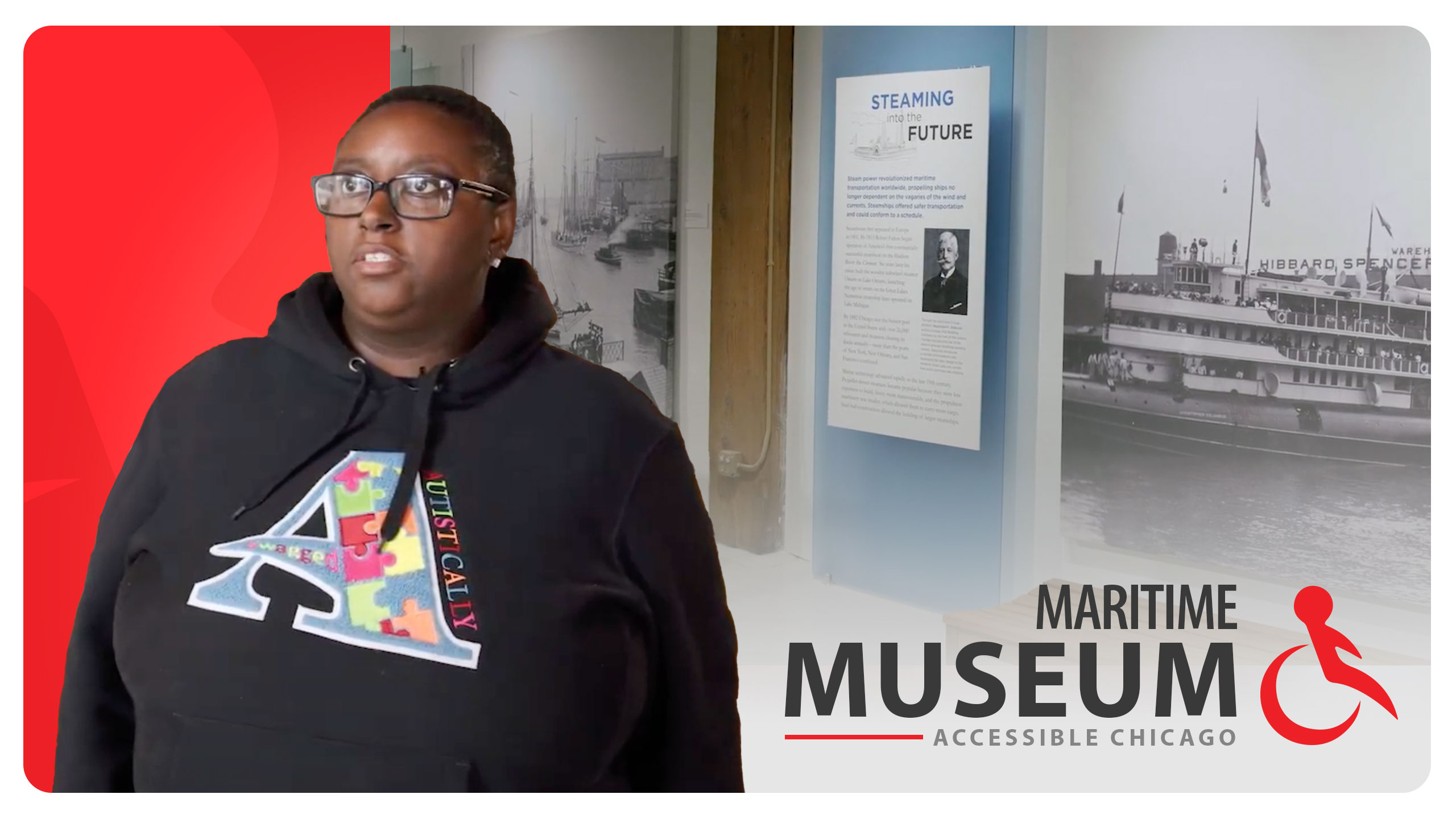
Join Madeline Crispell, curator of the Chicago Maritime Museum, and Victoria Boateng, a sub autism advocate and musician, on a fascinating journey through Chicago’s rich maritime history! In this video, Madeline and Victoria explore the exhibits at the Chicago Maritime Museum, delving into the construction of birch bark canoes, learning about the city’s ties to the Great Lakes and the Mississippi River, and uncovering intriguing stories about Chicago’s past, including insights into the Chicago Fire. Don’t miss out on this opportunity to dive into the captivating world of Chicago’s maritime heritage.
Click to View ASL Transcript
(Bright music)
MADELINE: I’m Madeline Crispell, and I’m the curator of the Chicago Maritime Museum. Here at the Chicago Maritime Museum on the river level of the Bridgeport Art Center. The Bridgeport Art Center is at Racine and 35th right on the shores of Bubbly Creek. This museum where we are right now, opened in 2016, but the Chicago Maritime Museum has longer roots in the city. It was first founded as a Chicago Maritime Society in 1982. We’re pretty easily accessible if you’re driving. There’s a free parking lot right upstairs outside of the museum. We’re accessible from the red or the orange line. You just hop on the train and then take a bus right to the museum, the stops at Racine, right outside. You can find a lot more information, driving directions, and transit directions from whatever direction you’re coming from on our website. We think it’s important to tell the history of Chicago through its waterways. Chicago is where it is today, Chicago is the city that it is today, because of its position between the Great Lakes and the Mississippi River. And so we want to empower the people of Chicago in understanding their own history, but also show this history off to people from all over the world who might be interested in it.
MADELINE: Hi, Victoria. Welcome to the Chicago Maritime Museum. I’m Madeline. I’m the curator of the museum, and today I’m giving you a guided tour.
VICTORIA: Awesome. Let’s go.
MADELINE: Let’s get started.
VICTORIA: My name is Victoria Boateng. I’m a sub autism advocate. I teach West African drumming for people with disabilities or autism and also perform with various artists and musicians I think it’s a wonderful exhibit. I learned so much about Chicago, especially Chicago has so much history that I was very naive about. So just basically just able to learn about the canoes, the strings, the ships and our history about the Chicago fire was very interesting for me. I was very new to it so, very excited about learning about this.
MADELINE: Right over here, we have a little display that gets into the construction of the birch bark canoe. So if you want to feel what birch bark feels like with the lashings feel like, what the cedar feels like, it gives you an idea of the materials that go into a canoe like this. I think it’s especially important for museums to be as inclusive as possible. This is where our history lives. History belongs to everyone and if you can’t access a space, you can’t access that history. And so we think this is an important enough story that everyone in Chicago, any visitor coming, should be able to hear it. I’m very pleased that all of our videos in the gallery are subtitled and pleased that we’re fully physically accessible. We’re all on one floor, which makes it a lot easier to get around. You can also on our website, find a videotaped guided tour of the museum. So you want to watch that. You can get a bit of an idea of what the space is like before you come down in person. We here at the museum consider it an ongoing challenge to always improve the accessibility of our space.
VICTORIA: When I came in, everybody was very nice, easy to walk in. So I think would be very accessible for people with disabilities, especially physical disabilities, mental disabilities, anybody is welcome. Well, I think everybody should be included. It doesn’t matter if you have a disability or not,
it’s all about bringing everybody together, it’s all about unity. And we all want to learn about the history and where it comes from. And that’s the most important part.

Recent Comments